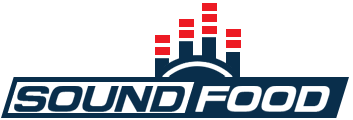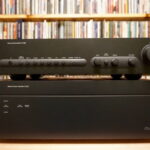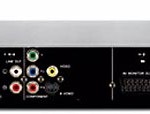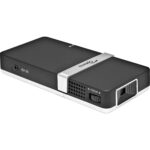You’ll no doubt remember how large a difference exists between lossless and lossy audio, but in case you don’t here’s a look at the spectral content of an identical song. The top part of the image shows the lossless signal with no missing artifacts. The bottom part shows the compressed and lossy signal with quite a bit of information missing.
The analogy of a bunch of bricks holds truer than ever with lossless audio. You have a stack of bricks (the data that contains your song), a box to put them in (the codec or file format) and a garage to store the box in (your hard drive). With lossless audio, you never throw away any of the bricks (unlike lossy audio). But, you can store these bricks more efficiently in a more suitable box to save room in your garage. This basically accounts for the differences between various lossless audio codecs, and there are a few options out there.

Lossless Audio Codecs
There are about 13 different lossless audio formats that I am aware of, but I’m only going to discuss those I find most relevant.
Apple Lossless Audio Codec (ALA) – Does the name give you any clues about who developed this codec? ALAC was designed by Apple specifically for usage on iPods and to stream via their AirPort Express interface. It does have some pretty good advantages as well.
Advantages
– Decoding is open source
– Supported on the iPod and AirPort Express
– Supports tagging
– Supports multi-channel audio and very high resolution
– Fast decoding speed
Disadvantages
– Encoding is closed source
– Average compression (new file is 58% of original wav)
– Limited software support

Monkey’s Audio (APE) – This particular codec was developed by Matt Ashland. Its popularity is relatively mixed. Although it has many positives, a few of the more technical disadvantages seem to have made it less popular amongst many lossless CD rippers.
Advantages
– Very efficient with good compression (55.5%)
– Supports tagging
– Completely open source
– Supports High Resolution
– Very good software support (the software itself comes with an official GUI)
Disadvantages
– No multichannel support
– Virtually no hardware support
– Doesn’t handle errors well
– Doesn’t support Replay Gain (Replay Gain is a technique used to achieve the same playback volume on all audio files)
Windows Media Audio Lossless (WMAL) – This is the lossless codec that was developed by Microsoft as a part of their Windows Media codec portfolio. Like ALAC, the fact that WMAL is associated with a known software developer gives WMAL some distinct advantages and disadvantages. It doesn’t seem to be particularly popular.
Advantages
– Great software support
– Streamable
– Supports multichannel audio and high resolution
– Supports Windows Media tagging
– Slightly better than average compression (56.30%)
Disadvantages
– Closed source/proprietary
– Limited hardware support
– Doesn’t support Replay Gain
Free Lossless Audio Codec (FLAC) – This popular codec was developed by Josh Coalson. FLAC has gained a lot of popularity amongst legal rippers and illegal sharers alike for its great flexibility, and is my personal favorite.
Advantages
– Open source
– Quick encoding and decoding
– Strong software support
– Supports multichannel audio and high resolution
– Supports tagging
– Supports replay gain
– Supports virtually every feature you could want
Disadvantages
– Mixed hardware support: Though it does not have native support on many different pieces of hardware, its popularity has drawn a lot of “hacks” and programming changes to make FLAC usable on various items.
– Average compression (58.70%)
The Future of Lossless Audio
Lossless audio, FLAC in particular, has been gaining ground over the last several years. The advantages of going lossless are clear: it’s the original source, and when a good codec is used, you can greatly decrease the size of the file. Naturally, these files are still larger than lossy audio files, but as bandwidth increases and hard drives become larger and more affordable, lossless audio support should only increase. Still, it does face challenges, most notably a lack of interest for many users. For most, ripping a simple mp3 and transferring it to their iPod is sufficient enough. To make matters worse, the Loudness War is driving many to create poor masters. The number of good recordings are growing increasingly slim amongst current music. Still, we should all be encouraging a transition from the typical low bitrate lossy audio files to high quality lossless audio.







